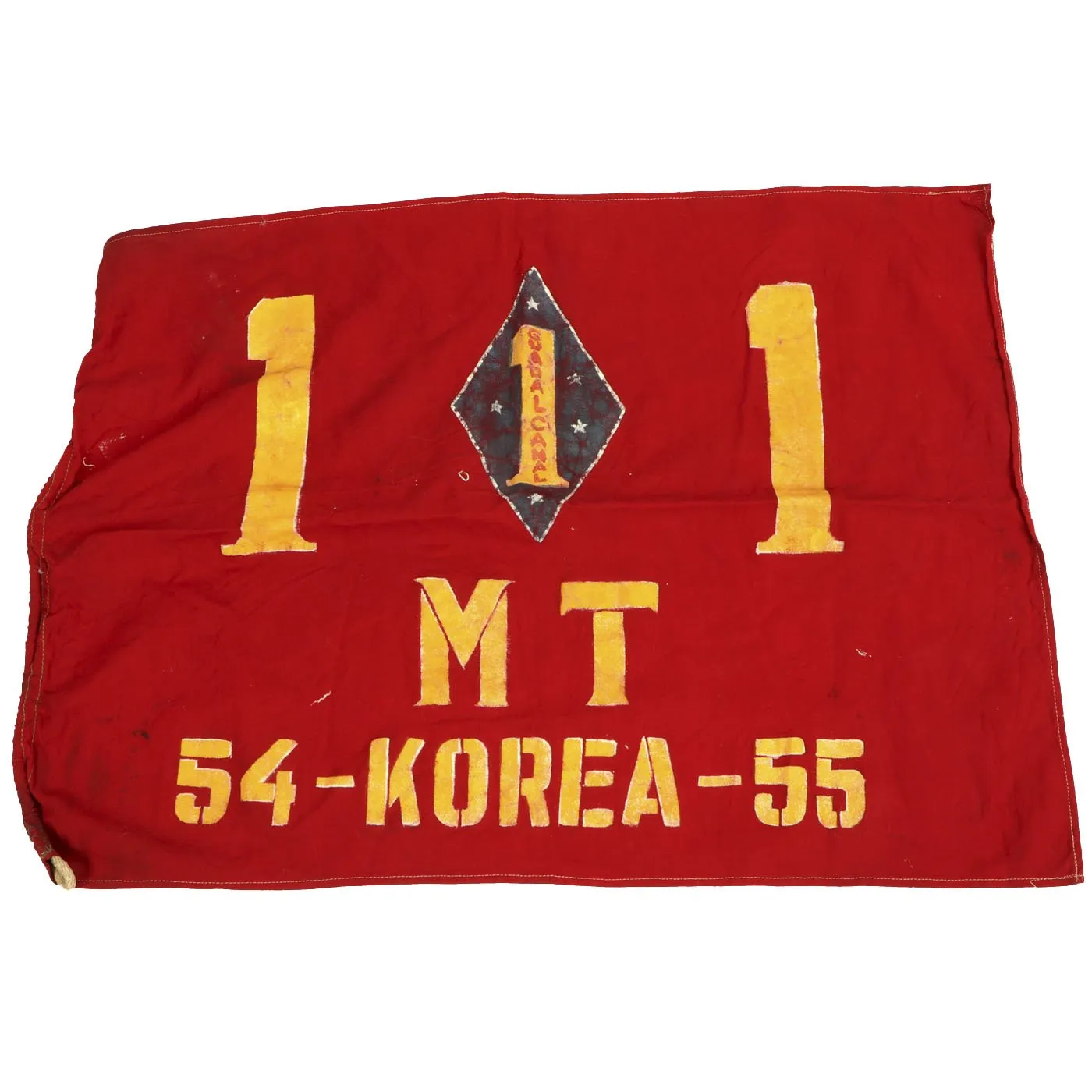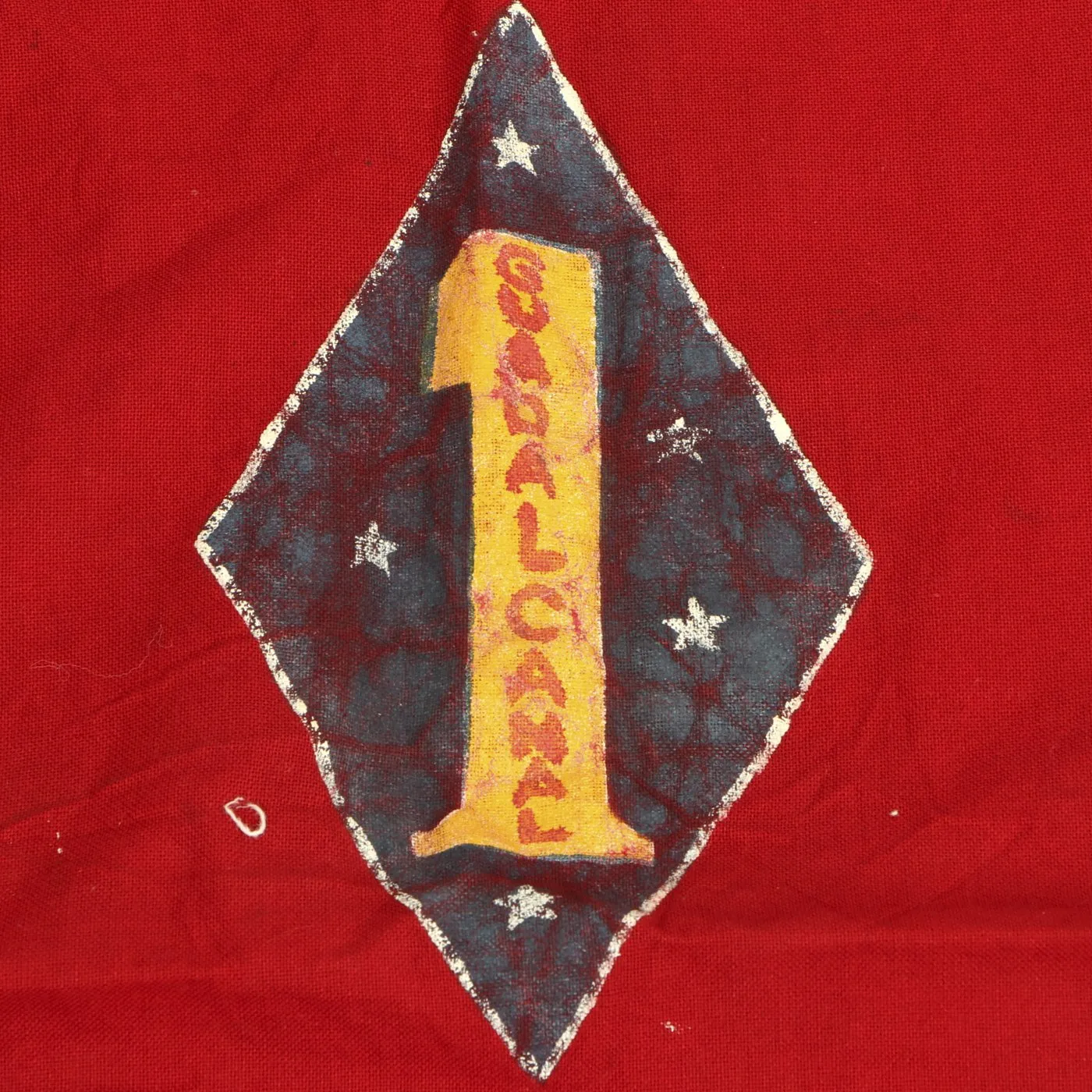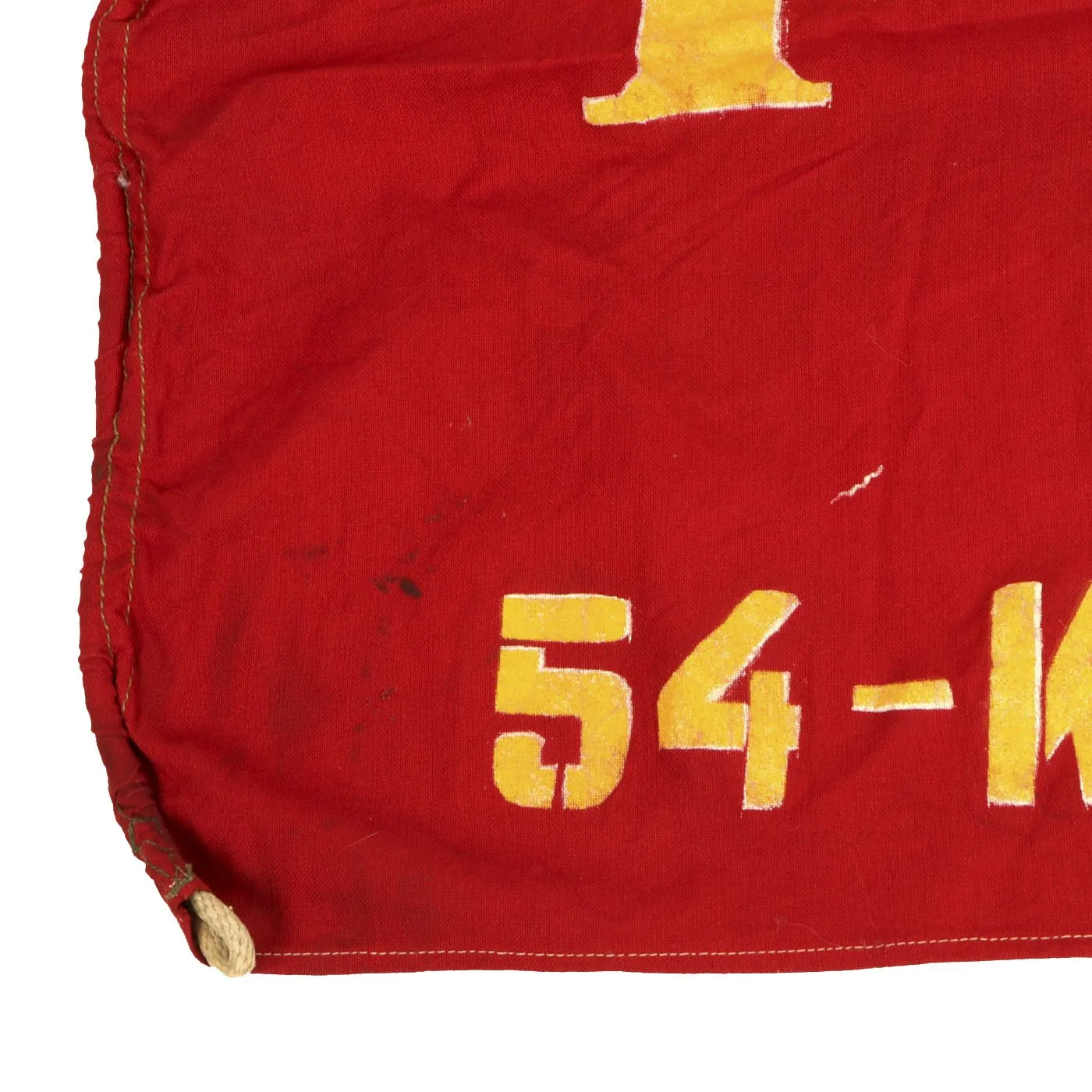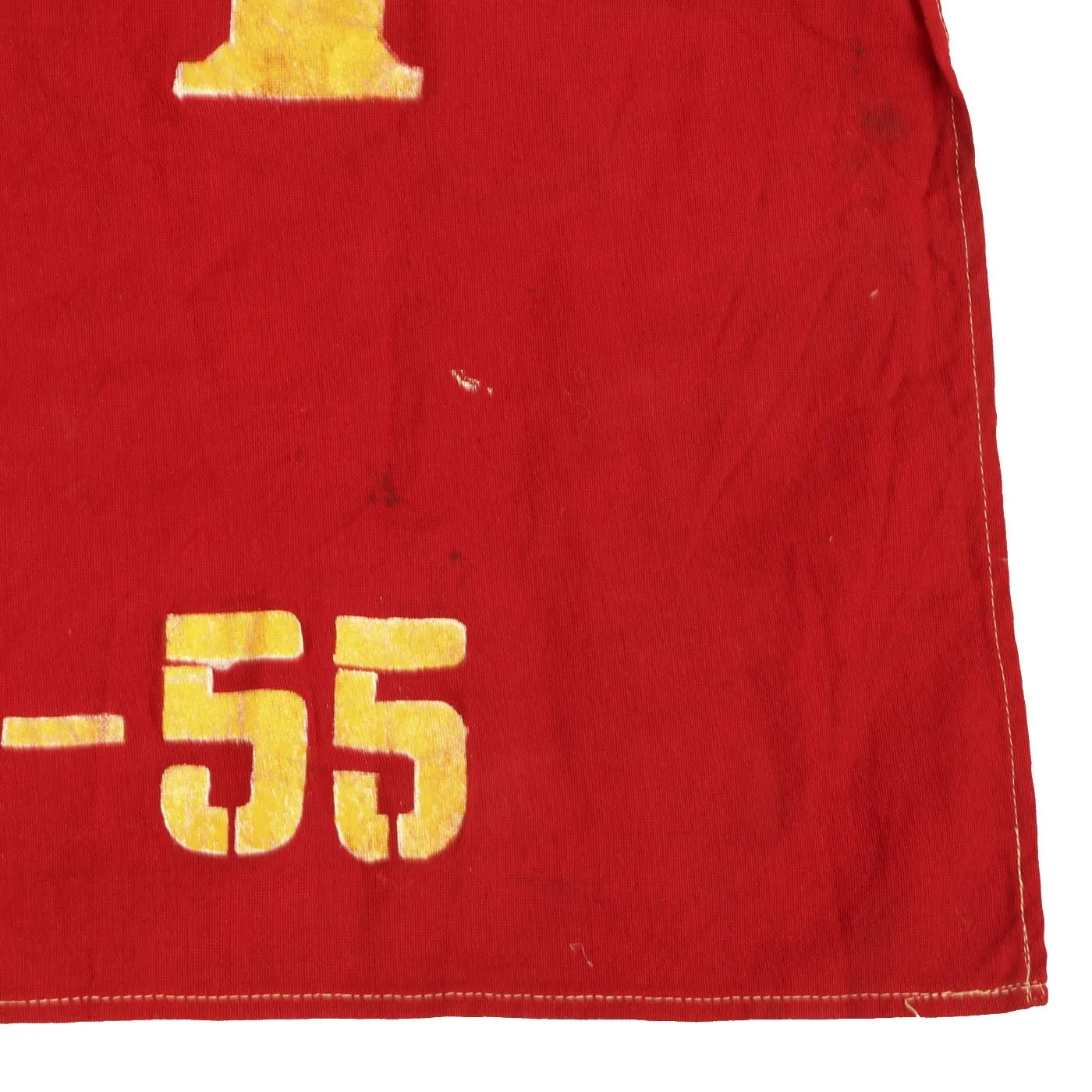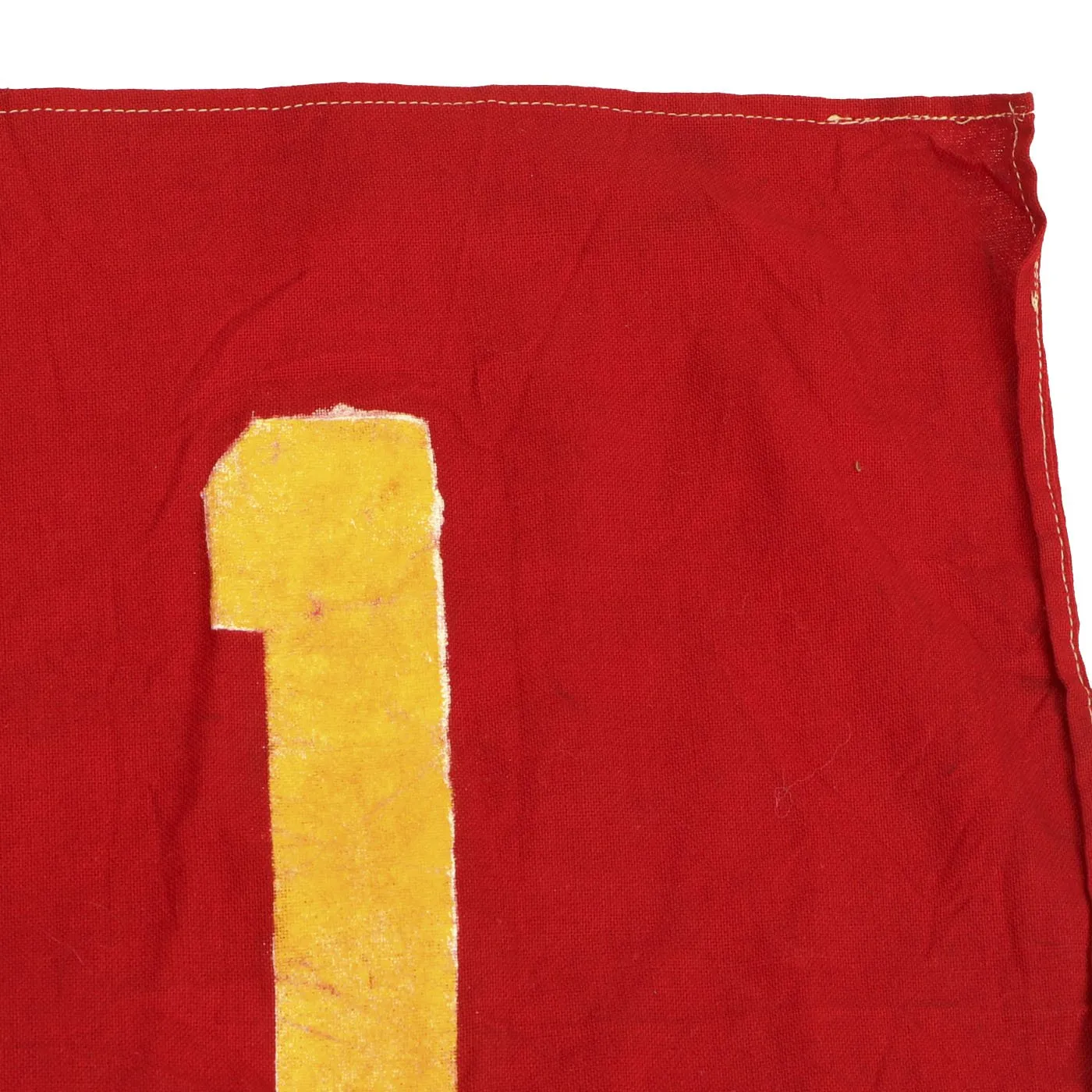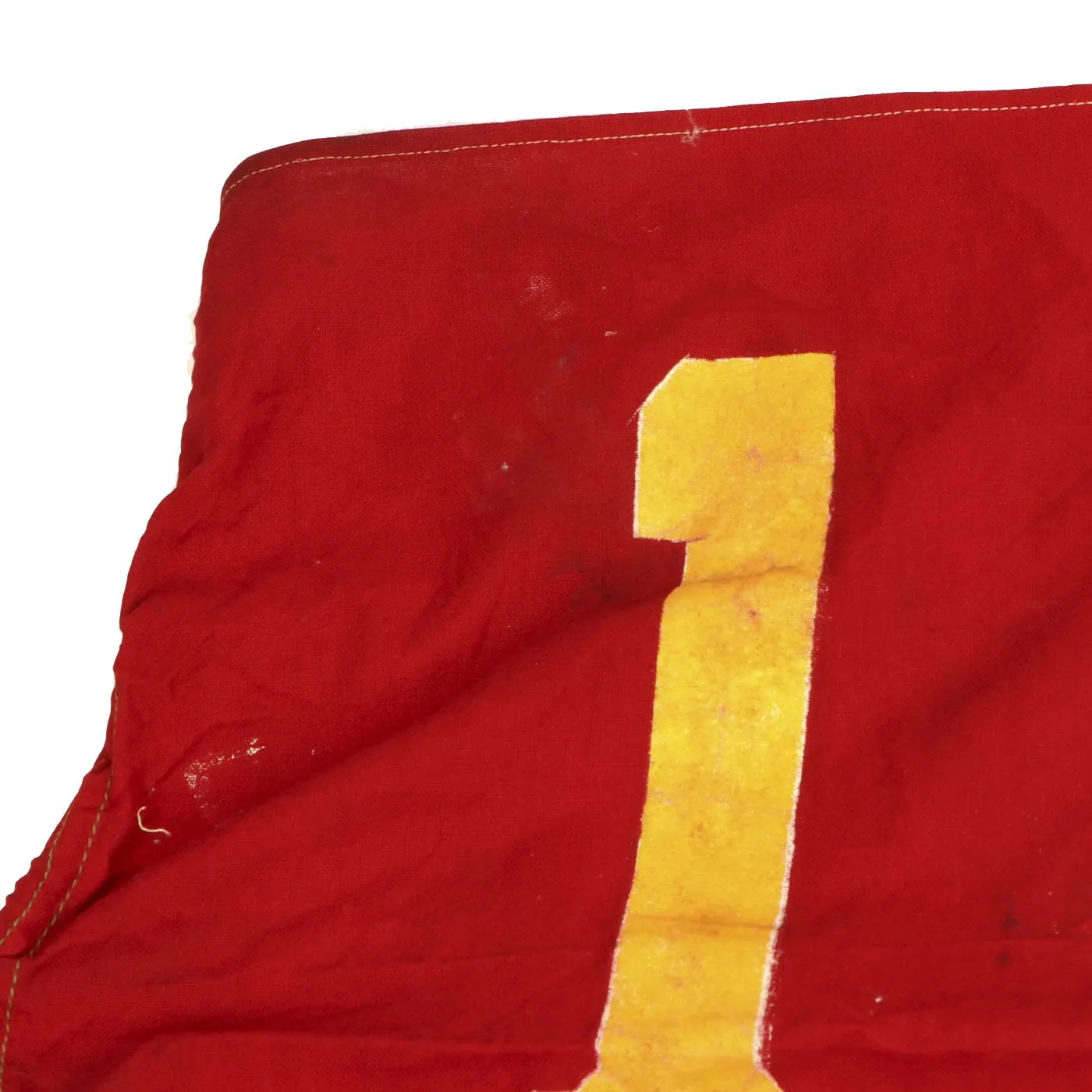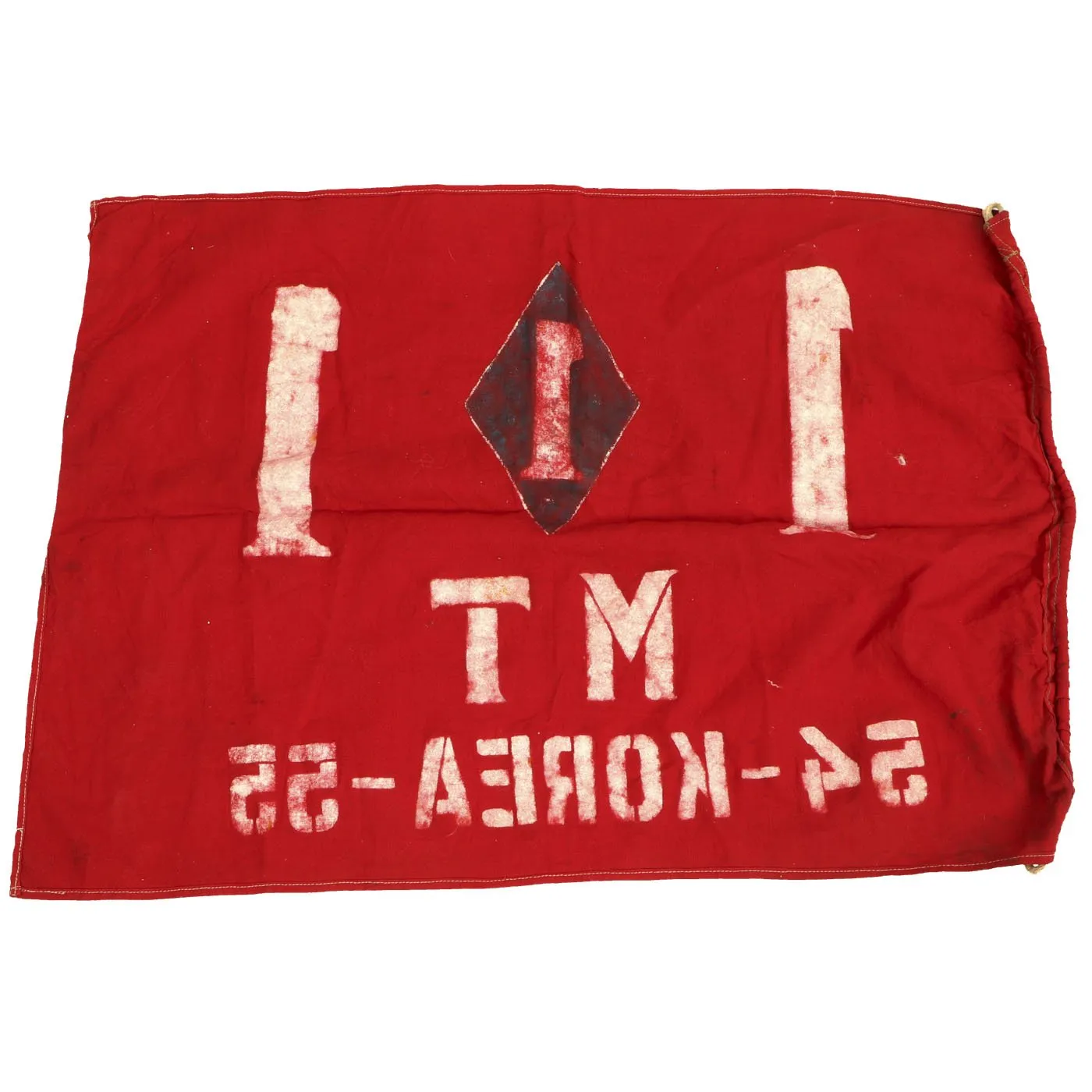Original Item: Only One Available. Very nice wool flag with rope stitched into the header for use as a hoist. The flag measures approximately 21" x 30" it is constructed of red wool and is hand painted. It reads MT 54 - KOREA - 55 with 1st Marine division insignia to the center.
History of the 1st Marine Division in World War II: The 1st Marine Division was activated aboard the USS Texas on 1 February 1941. The division's units were scattered over the Pacific with the support elements and the 1st Marine Regiment transported en route to New Zealand on three ships, the USATs Ericsson, Barnett and Elliott from Naval Reserve Air Base Oakland to New Zealand, and later were landed on the island of Guadalcanal, part of the Solomon Islands, on 7 August 1942.
Initially only the 7th Marine Regiment was in garrison on British Samoa, with the 5th Marine Regiment having just encamped at Wellington, New Zealand after disembarking from USAT Wakefield, and the 1st Marine Regiment not scheduled to arrive in New Zealand until 11 July.The 1st Raider Battalion was on New Caledonia, and the 3rd Defense Battalion was in Pearl Harbor. All of the division's units, with the 11th Marines (artillery) and 75mm howitzer armed 10th Marines battalion would rendezvous at Fiji.
Due to the change in orders and shortage of attack and combat cargo vessels, all of the division's 2.5 ton trucks, M1918 155-mm howitzers and the sound and flash-ranging equipment needed for counter-battery fire had to be left in Wellington. Also, because the Wellington dock workers were on strike at the time, the Marines had to do all the load reconfiguration from administrative to combat configuration.
After 11 days of logistical challenges, the division, with 16,000 Marines, departed Wellington in eighty-nine ships embarked for the Solomon Islands with a 60-day combat load which did not include tents, spare clothing or bed rolls, office equipment, unit muster rolls or pay clerks. Other things not yet available to this first wave of Marine deployments were insect repellent and mosquito netting. Attached to the division was the 1st Parachute Battalion, which along with the rest of the division, conducted landing rehearsals from 28 to 30 July on Koro Island, which Major General Alexander Vandegrift described as a "disaster".
On 31 July the entire Marine task force was placed under the command of Vice Admiral Frank J. Fletcher's Task Force 61. The division as a whole would fight in the Battle of Guadalcanal until relieved at 1400 on 9 December 1942 by Alexander Patch's Americal Division. This operation won the Division its first of three World War II Presidential Unit Citations (PUC). The battle would cost the division 650 killed in action, 1,278 wounded in action with a further 8,580 contracting malaria and 31 missing in action. Others were awarded for the battles of Peleliu and Okinawa.
Following the Battle of Guadalcanal, the division's Marines were sent to Melbourne, Australia for rest and refit. It was during this time that the division took the traditional Australian folk song "Waltzing Matilda" as its battle hymn. To this day, 1st Division Marines still ship out to this song being played.
The division would next see action during Operation Cartwheel which was the codename for the campaigns in Eastern New Guinea and New Britain. They came ashore at the Battle of Cape Gloucester on 26 December 1943 and fought on New Britain until February 1944 at such places as Suicide Creek and Ajar Ridge. During the course of the battle the division had 310 killed and 1,083 wounded. Following the battle they were sent to Pavuvu in the Russell Islands for rest and refitting.
The next battle for the 1st Marine Division would be the bloodiest yet at the Battle of Peleliu. They landed on 15 September 1944 as part of the III Amphibious Corps assault on the island. The division's commanding general, Major General William H. Rupertus had predicted the fighting would be, "...tough but short. It'll be over in three or four days a fight like Tarawa. Rough but fast. Then we can go back to a rest area." Making a mockery of the prediction, the first week of the battle alone cost the division 3,946 casualties, during which time they secured the key airfield sites. The division fought on Peleliu for one month before being relieved. Some of the heaviest fighting of the entire war took place in places such as Bloody Nose Ridge and the central ridges of the island that made up the Umurbrogol Pocket. The month of fighting against the 14th Division (Imperial Japanese Army) on Peleliu cost the 1st Marine Division 1,252 dead and 5,274 wounded.
The final campaign the division would take part in during World War II would be the Battle of Okinawa. The strategic importance of Okinawa was that it provided a fleet anchorage, troop staging areas, and airfields in close proximity to Japan. The division landed on 1 April 1945 as part of the III Amphibious Corps. Its initial mission was, fighting alongside the 6th Marine Division, to clear the northern half of the island that they were able to do expeditiously. The Army's XXIV Corps met much stiffer resistance in the south, and in late April the Marine division was moved south where it relieved the Army's 27th Infantry Division. The division was in heavy fighting on Okinawa until 21 June 1945, when the island was declared secure. The 1st Marine Division slugged it out with the Japanese 32nd Army at such places as Dakeshi Ridge, Wana Ridge, "Sugarloaf Hill" and Shuri Castle. Fighting on Okinawa cost the division 1,655 killed in action.
Following the surrender of Japan, the division was sent to Northern China as the lead combat element of the III Amphibious Corps with the primary mission of repatriating more than 650,000 Japanese soldiers and civilians still resident in that part of China. They landed at Taku on 30 September 1945 and would be based in Hopeh Province in the cities of Tientsin and Peiping, and also on the Shandong Peninsula, with the Chinese Civil War between the Kuomintang and Chinese Communist Party raging around them. Most Marines in the division would be charged with guarding supply trains, bridges and depots to keep food and coal moving into the cities. During this time they increasingly fought skirmishes with soldiers from the People's Liberation Army who saw the railways and other infrastructure as attractive targets to ambush, raid, and harass.
By the summer of 1946 the division was suffering the effects of demobilization and its combat efficiency had dropped below wartime standards; however, its commitments in China remained. As it became increasingly apparent that a complete collapse of truce negotiations among the Chinese factions was apparent, plans were laid for the withdrawal of all Marine units from Hopeh. The last elements of the division finally left China on 1 September 1947.




